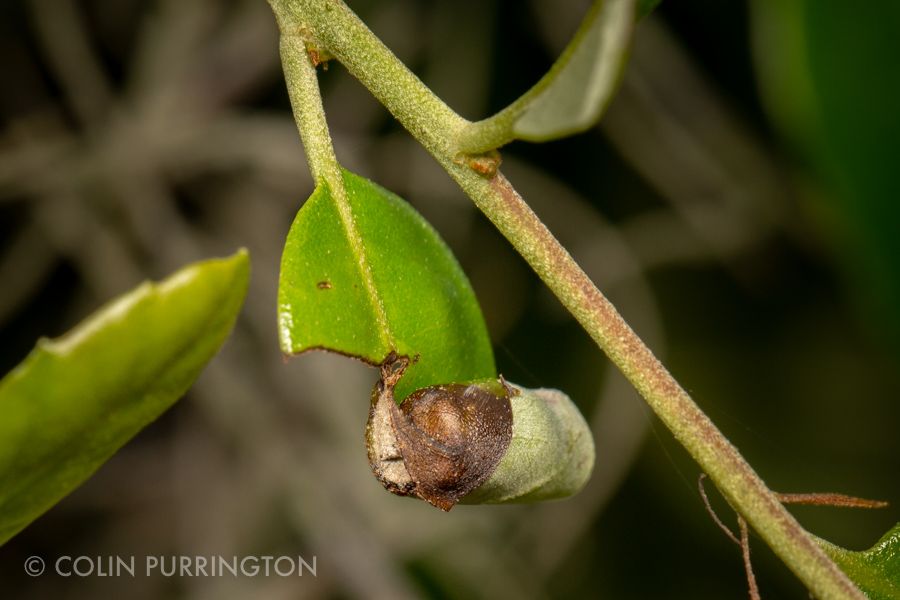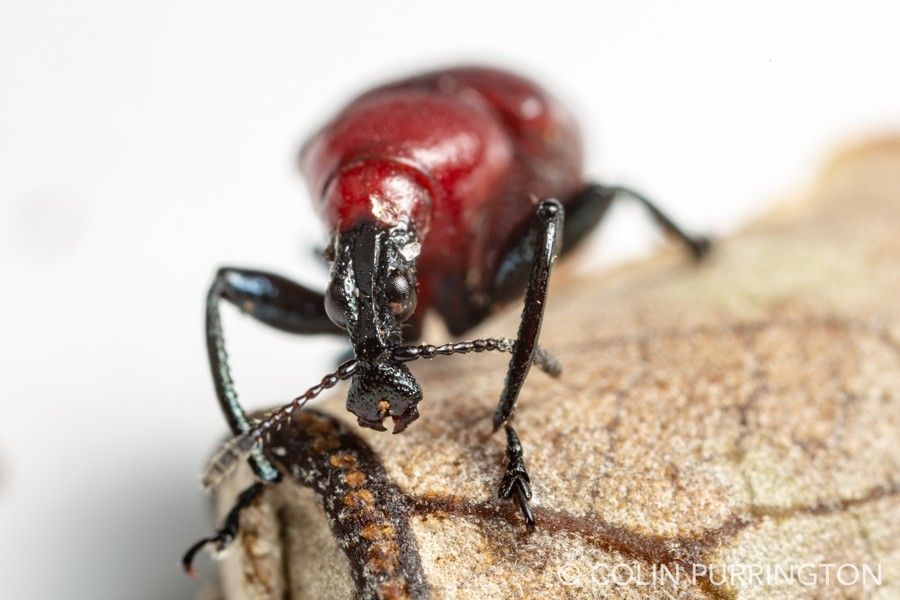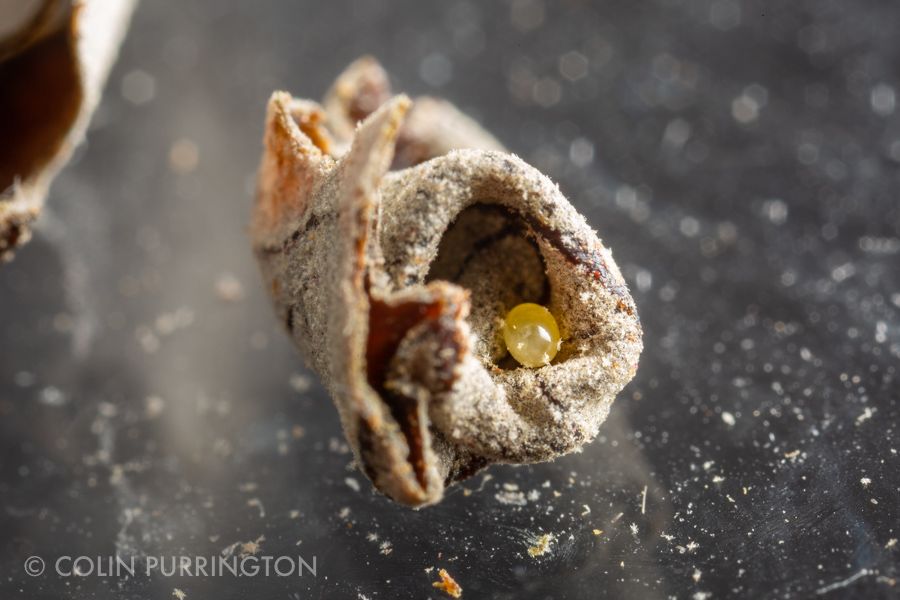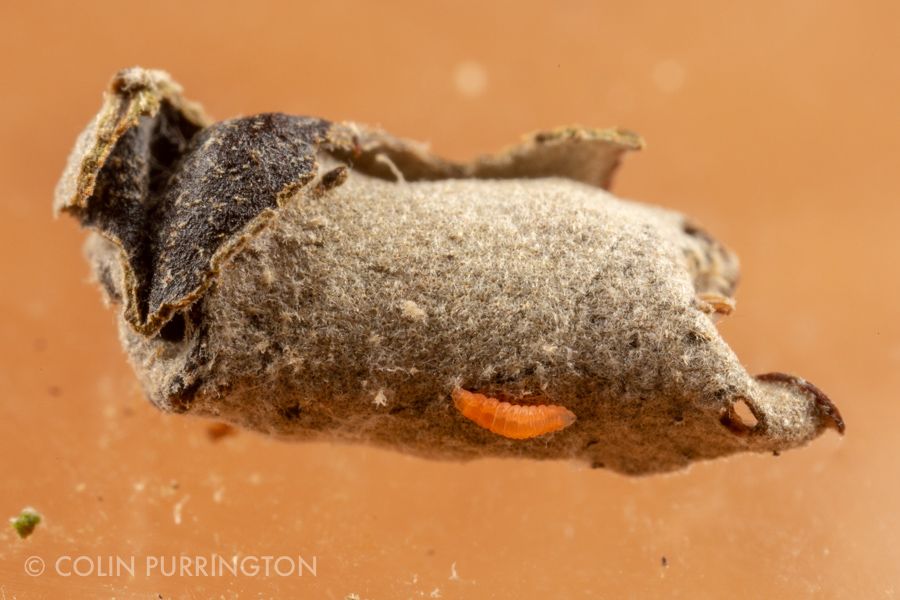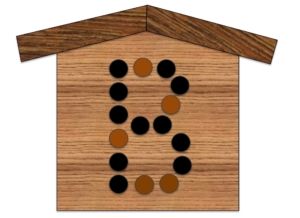If you’ve been to Florida and stared at any of the live oaks there, you’ve probably noticed the tiny, burrito-shaped structures on many of these leaves. If you haven’t seen them, you might have heard them — they accumulate under oak trees in sufficient numbers that you’ll hear crunching as you walk over them.
These structures are made by the oak leaf-rolling weevils in the subfamily Attelabinae (the “leaf rolling weevils”, appropriately) and they are called nidi (Latin for “nest” or “place where egg is placed”). Several species nidify (yes, it’s a verb) oak but perhaps the most common species is Homoeolabus analis. I caught a female in the act:
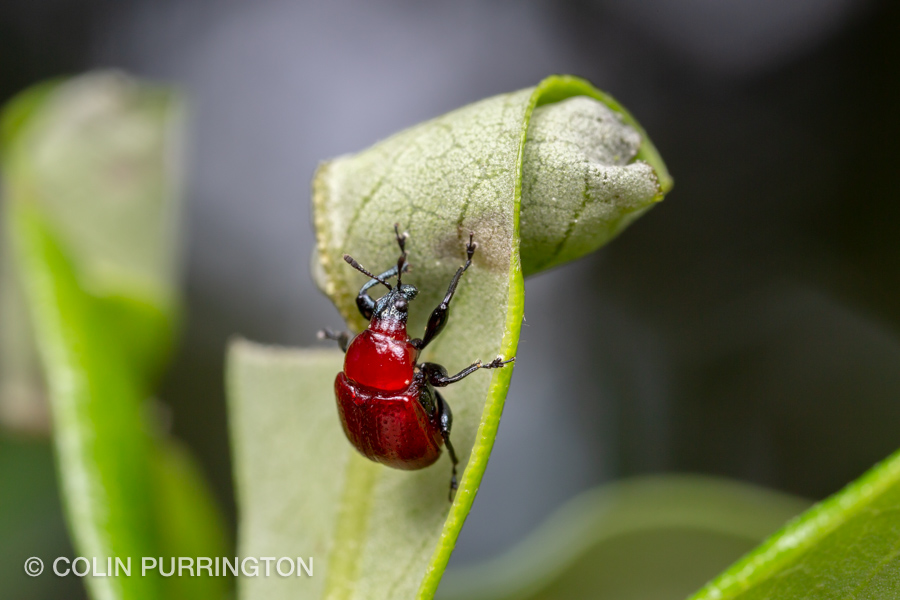
This shows her fairly well along in the process but I really wish I could show you a video of her technique, which is amazing. Before this stage she’ll first survey the leaf compulsively, scissor the leaf in half at the midrib, then use mandibles and legs to feverishly roll it into a burrito. Midway through the nidification she’ll deposit an egg (sometimes two) and then, I gather, will guard the nidus from parasitic wasps while it hardens up a bit. She’s also guarding against intrusion by the the thief weevil (Pterocolus ovatus), a blueberry-like attelabid that sneaks into fresh nidi and eats the eggs. But that’s not all. Female thief weevils will leave their own egg inside the nidus and this theft of home is the source of their common name.
Here’s a male, by the way (you can tell because he has a longer neck):
On that note, here’s an egg I found inside one of the nidi. I think it’s Homoeolabus analis but it could be Pterocolus ovatus.
I opened up several dozen of these nidi and found all sorts of drama. Several had some sort of orange cecidomyiid larvae (more pics) in the middle layers of the nidi:
And found plenty of eggs that were definitely not weevil eggs but that are not photogenic enough to post. Suffice it to say that there are many parasitic wasps that have been known to attack this species. If I lived in Florida I’d have hundreds of these in vials just so I could watch the emergers. Better than television.
As a side note, if you have a beetle that looks like Homoeolabus analis, it easily could be Synolabus nigripes, a member of the Attelabinae that also has red, punctate elytra and pronotum; black legs with swollen femora; and long rostrum that is largely though variably black. And ranges overlap (see maps here and here). Below are some ways to tell them apart that I collected from a variety of sources. Many involve knowing which sex an individual is, but luckily males have longer necks. And if an individual is caught nidifying a leaf, it’s a female.
Homoeolabus analis
- sides of neck parallel, not wider near pronotum (from Boris Büche)
- males: distance between pronotum and eyes equal to length of rostrum (example)
- males: pair of spines/projections on the submentum (p. 175 in The Insects and Arachnids of Canada; p. 707 in American Beetles); need a microscope
- females: straight tibiae (see 2nd pic near top of this post)
- on, eating, or nidifying Quercus spp.
- black parts have a blue tinge (see above pic) (LeConte 1876, page 10); this characteristic seems ignored in all later descriptions … but I think it should be featured
Synolabus nigripes
- width of neck behind eyes greater than width at tip of neck (from Boris Büche)
- males: distance between pronotum and eyes less than length of rostrum (to me, they evoke the Spy vs Spy comic book characters from Mad Magazine)
- males: large spine(s) on front femora (example)
- females: “ventral rostral apex in lateral view with median conical prominence” (American Beetles, p. 707); need a microscope
- on, eating, or nidifying Rhus spp.; usually sumac, sometimes poison ivy
- no bluish tinge on black parts (Evans p. 464)
If you still need help IDing, submit a photograph to either iNaturalist (I’m @colinpurrington if you want to tag me in your observation) or BugGuide. Here are Homoeolabus analis observations on iNaturalist.
If you want more information on Homoeolabus analis or the parasites that attack it, here’s a great overview by Donald W. Hall and Lyle J. Buss (both at the University of Florida). And here’s a post by Charley Eiseman with pics and natural history of yet another (but not all-red) oak leaf-rolling weevil, Attelabus bipustulatus. If you want to see some nidifying, there are YouTube videos of various Attelabidae.

